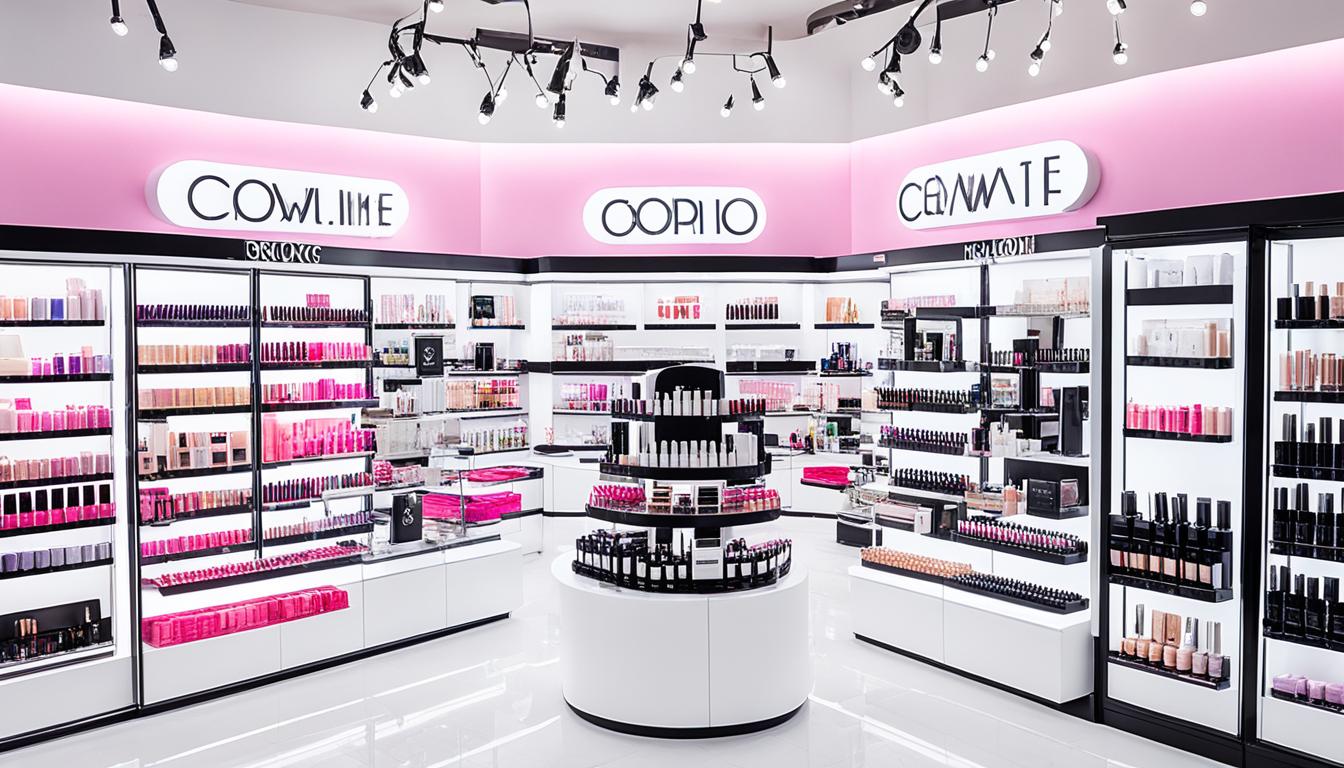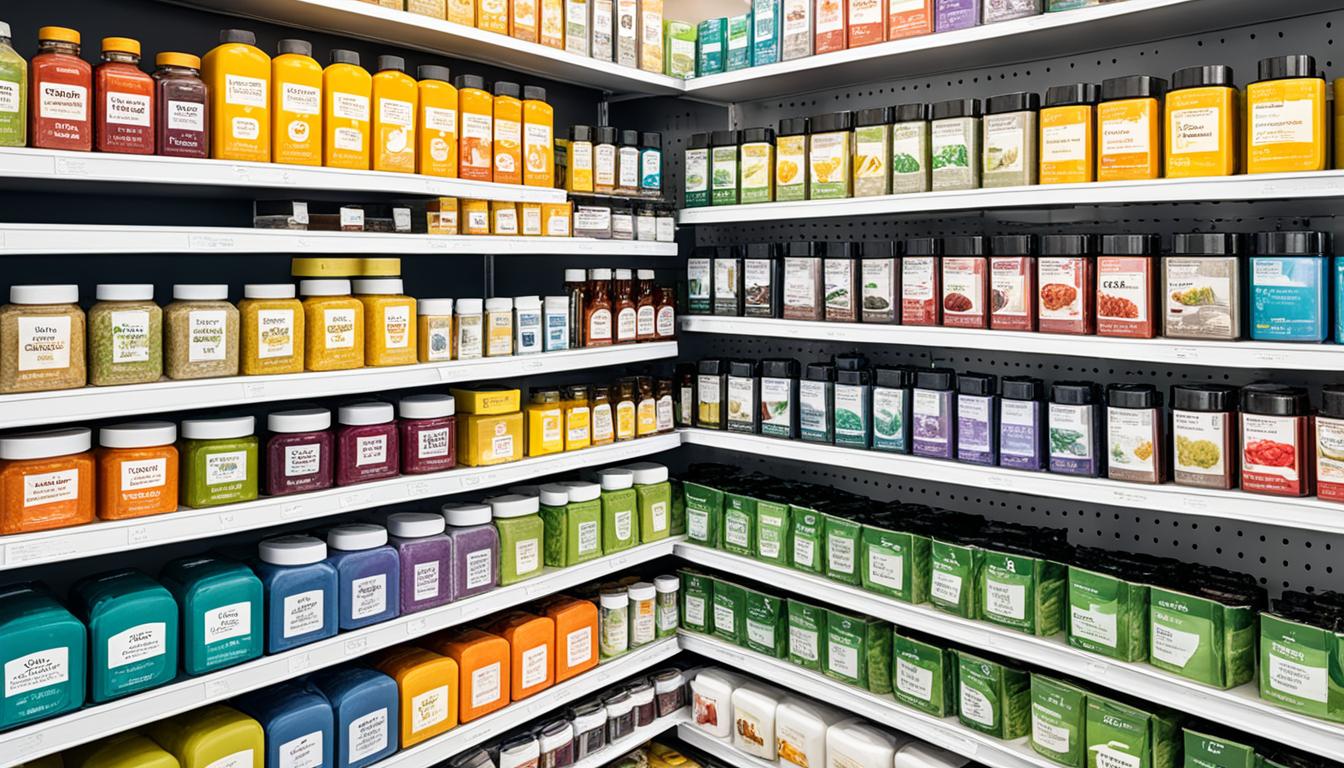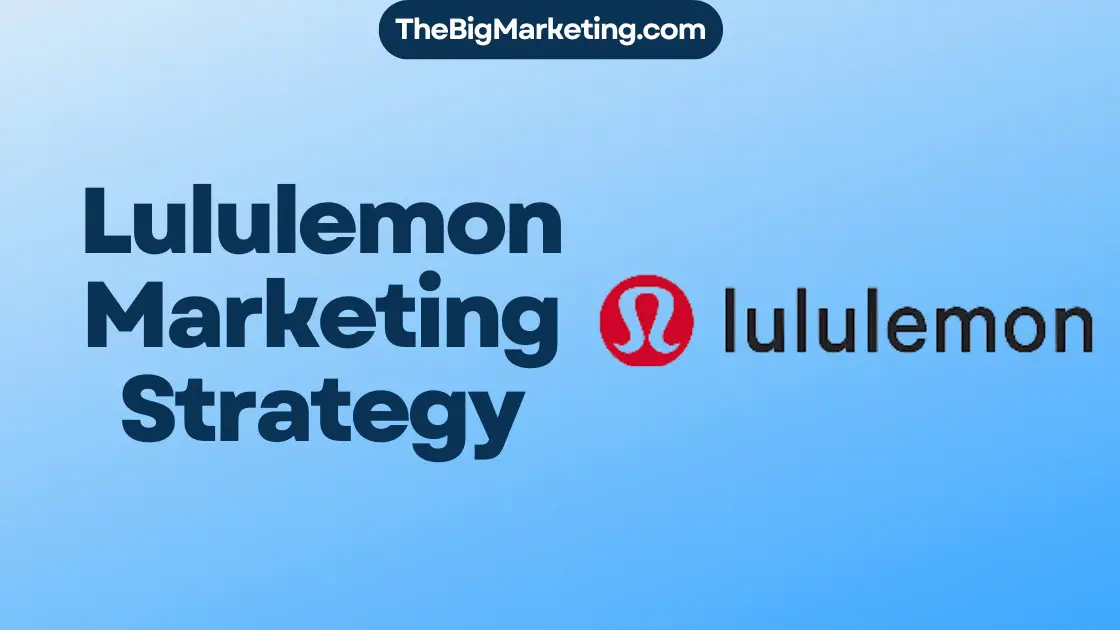The Hershey Company, founded in 1894 by Milton Hershey, has established itself as a leading chocolate company with a strong focus on brand equity, product originality, and superior quality. As part of its marketing strategy, Hershey’s heavily invests in digital media, utilizing platforms such as Facebook, Twitter, Instagram, and YouTube to engage with customers and create brand awareness.
Hershey’s success can be attributed to its acquisition of popular brands like Reese’s, Kit Kat, Hershey’s Kisses, and York Peppermint Patties, expanding its product portfolio and catering to a wide range of consumer preferences. The company’s marketing campaigns have harnessed the power of emotional storytelling to establish a connection with consumers.
Through micro-marketing techniques, Hershey’s creates special themed campaigns for holidays, targeting specific groups like children, dancers, immigrants, and diverse societies. The company’s advertising strategy emphasizes not only the deliciousness of its products but also their health benefits.
Hershey’s website serves as a comprehensive resource for customers, providing detailed product information, history, recipes, and videos. The company’s branding strategy centers around digital media and social media platforms, maintaining an active presence on Facebook, Twitter, Instagram, and YouTube.
Key Takeaways:
- Hershey’s has successfully established itself as a leading chocolate company with a focus on brand equity, product originality, and superior quality.
- The company employs micro-marketing techniques and creates special themed campaigns for holidays.
- Hershey’s advertising strategy emphasizes emotional storytelling and targets specific groups.
- The company utilizes social media platforms and its website to engage with customers and provide information about its products.
- Hershey’s branding strategy revolves around digital media and social media platforms.
Hershey’s Brand Positioning
Hershey’s brand positioning is a result of its relentless commitment to quality, innovation, and customer satisfaction. With a diverse and wide-ranging target audience, Hershey’s has strategically crafted its brand image to appeal to consumers of all ages and preferences. Through consistent product development and marketing efforts, Hershey’s has established itself as a top-choice brand in the confectionery market, both in the United States and globally.
Hershey’s market share dominance is a reflection of its brand reliability and its ability to adapt to changing consumer trends. By closely monitoring consumer preferences and behaviors, Hershey’s stays ahead of the competition and ensures that its products remain relevant. This dedication to understanding consumer needs has allowed Hershey’s to align product development with marketing, delivering products that resonate with the target audience.
Hershey’s Differentiation
What sets Hershey’s apart from its competitors is its unwavering commitment to product quality, customer service, and supply chain excellence. Hershey’s prides itself on its manufacturing capabilities and global supply chain, allowing it to maintain a high level of customer satisfaction. With a #1 customer service ranking amongst its peers, Hershey’s ensures that its products reach consumers with efficiency and reliability.
In addition to its supply chain strengths, Hershey’s leverages data analysis to drive its operations and enhance the consumer experience. By utilizing data-driven advertising strategies, Hershey’s tailors its marketing campaigns to specific target audiences, ensuring maximum impact and return on investment. This approach enables Hershey’s to connect with consumers on a more personal level through digital media, delivering unique messages at the right time and to the right audience.
Furthermore, Hershey’s iconic brand identity is instantly recognizable, making it a powerful tool in attracting and engaging consumers. Through captivating marketing campaigns like “Hershey’s Kisses Bells” and “Hershey’s Love Story,” Hershey’s has successfully built brand awareness and fostered brand loyalty.
Looking ahead, Hershey’s branding strategy for 2024 aims to capture more snacking occasions and drive growth while focusing on profitable and sustainable international expansion. By continuously innovating its product offerings, effective place positioning, captivating promotion, and strategic pricing, Hershey’s will continue to solidify its position as a leader in the confectionery market.
Hershey’s Advertising Strategy
Hershey’s, the second-largest chocolate manufacturer globally, has established itself as a leader in the confectionery industry through its successful advertising strategies. The company’s advertising efforts are built on three core principles: creating emotional connections with consumers, focusing on product quality, and leveraging its rich heritage.
Hershey’s understands the power of emotional storytelling in captivating its target audience. By incorporating compelling narratives and relatable experiences into their ad campaigns, Hershey’s aims to establish a deep emotional connection with consumers. These emotionally-driven campaigns resonate with individuals, evoking positive emotions and creating a sense of nostalgia.
To reach a wide range of consumers, Hershey’s employs various mediums in its ad campaigns. Television commercials remain a significant part of their advertising strategy, allowing them to reach a broad audience. Additionally, Hershey’s has embraced the digital age and actively engages with consumers through social media platforms. The brand’s social media reach includes over 10 million followers on Facebook and more than 150,000 followers on Instagram.
One of Hershey’s notable advertising initiatives is the introduction of limited edition products tailored specifically for holiday seasons like Halloween, Christmas, and Easter. These seasonal campaigns generate excitement and anticipation among consumers, driving sales and reinforcing the brand’s association with special occasions and celebrations.
Furthermore, Hershey’s has strategically acquired other brands to expand its product portfolio and reach new consumer segments. For example, the acquisition of Amplify Snack Brands added popular brands like SkinnyPop popcorn and Oatmega protein bars to their offerings. This diversified product lineup allows Hershey’s to tailor its advertising campaigns to different target audiences, ensuring maximum impact and consumer engagement.
Hershey’s commitment to product quality is evident in its advertising campaigns. The company leverages its meticulous manufacturing processes, from sourcing the finest cocoa beans to implementing strict quality control measures. By highlighting these quality standards in their advertisements, Hershey’s reinforces its brand image and establishes credibility among consumers.
From its inception over a century ago, Hershey’s has built a strong and recognizable brand image. The company’s advertising efforts have played a pivotal role in shaping this brand identity. Hershey’s has embraced innovative techniques like experiential marketing and interactive digital campaigns to engage consumers and create memorable brand experiences. These strategies have greatly influenced Hershey’s market share by encouraging repeat purchases, driving brand loyalty, and attracting new customers.
Hershey’s advertising budget reflects its commitment to sustaining a competitive advertising presence. The company allocated $655 million to advertising expenses in 2021, ensuring that its brand remains top-of-mind for consumers across various platforms.
Overall, Hershey’s advertising strategy has been instrumental in its success as the largest chocolate manufacturer in North America. By creating emotional connections, emphasizing product quality, leveraging its rich heritage, and embracing innovative techniques, Hershey’s continues to captivate consumers and solidify its position in the confectionery industry.
Hershey’s Digital Marketing Strategy
As the world’s largest chocolate manufacturer, Hershey’s has established itself as a renowned brand with a rich history spanning over a century. Over the years, Hershey’s has consistently evolved its marketing strategies, adapting to changing consumer preferences and market trends. Today, Hershey’s digital marketing strategy plays a pivotal role in its overall brand positioning and consumer engagement.
Recognizing the significance of the digital landscape, Hershey’s has invested in a comprehensive digital marketing strategy that encompasses various areas such as brand sites, digital B2B, search, and digital content. At the core of this strategy are five key pillars: Connections, Content, Conversion, Community, and Consumer. These pillars serve as the guiding principles for Hershey’s digital initiatives, focusing on building strong connections with its audience, delivering engaging content, driving conversion, fostering a sense of community, and ultimately serving its consumers.
Social Media Engagement
Hershey’s understands the power of social media in today’s digital age and leverages popular platforms like Facebook, Twitter, Instagram, and YouTube to connect with its dedicated fans and followers. Through these platforms, Hershey’s maintains a robust social media presence, engaging with its audience and sharing captivating updates about its products and initiatives. From mouth-watering recipe ideas on Instagram to behind-the-scenes videos on YouTube, Hershey’s creates fun and interactive content that resonates with its target audience.
In addition to social media, Hershey’s prioritizes information sharing through its website, providing extensive product information, inspiring recipes, and engaging videos. This serves as a central hub for consumers to explore and interact with Hershey’s brand. Hershey’s digital marketing strategy aims to create personalized experiences for its consumers, tailoring marketing messages and campaigns to specific consumer segments through the utilization of personas.
Innovation and Collaboration
Hershey’s digital commerce team plays a crucial role in the execution of the brand’s digital marketing strategy. The team focuses on understanding consumers and customers, designing solutions that serve their evolving needs and preferences. Collaboration and teamwork are key components of Hershey’s culture, extending not only within the company but also in the brand’s relationships with consumers. This collaborative approach enables Hershey’s to adapt and innovate, driving product diversification and attracting a wider consumer base.
| Hershey’s Digital Marketing Strategy | Key Elements |
|---|---|
| Connections | Building strong connections with the audience through social media and website engagement. |
| Content | Creating engaging and personalized content that resonates with different consumer segments. |
| Conversion | Driving conversion through compelling storytelling and targeted marketing campaigns. |
| Community | Fostering a sense of community through collaboration and engagement both internally and externally. |
| Consumer | Understanding consumer needs and preferences to design solutions that serve them effectively. |
With a clear focus on digital marketing, Hershey’s is dedicated to staying at the forefront of innovation and creating impactful brand experiences for its consumers. Through its digital commerce initiatives, Hershey’s not only delivers high-quality chocolate but also builds an emotional connection with consumers, solidifying its reputation as a beloved brand that continually evolves to meet the demands of the digital era.
Hershey’s Market Segmentation
Hershey’s understands the significance of market segmentation in reaching and engaging its target audience effectively. The company divides its consumer base into distinct customer segments and tailors its marketing efforts to meet the specific needs and preferences of each group. This approach allows Hershey’s to maximize its market potential and drive customer satisfaction.
Demographic Segmentation
One of the key demographic variables used by Hershey’s is age. Research over the last ten years has shown that teenagers represent one of the biggest chocolate-consuming groups, with an average consumption rate of 72%. Recognizing this, Hershey’s has identified its Air Delight chocolate as most suitable for children and teenagers, ensuring that it caters to their tastes and preferences.
Psychographic Segmentation
In addition to demographic factors, Hershey’s also uses psychographic segmentation to understand consumer segments based on social class, lifestyle, or personality characteristics. This allows the company to cater to specific consumer preferences and behaviors, ensuring that its marketing efforts resonate with the target audience.
With the market potential for healthier alternatives on the rise, Hershey’s recognizes the importance of capturing this consumer segment. While the healthy chocolate segment is relatively small, it has substantial growth potential as consumers become more health-conscious. Hershey’s response to this trend includes leading the better-for-you snacking market with sugar-free and Zero Sugar products. The company is also exploring the plant-based segment, one of the fastest-growing better-for-you segments, by introducing Oat Made Chocolate bars to cater to health-conscious consumers.
Through strategic market segmentation and a micro-marketing approach, Hershey’s is able to tailor its products and marketing campaigns to meet the diverse needs and preferences of its target customers. This personalized approach ensures that Hershey’s maximizes its marketing efforts and maintains long-term customer loyalty and retention.
| Market Segmentation Insights | Key Takeaways |
|---|---|
| Teenagers represent one of the biggest chocolate-consuming groups, with an average consumption rate of 72%. | Hershey’s Air Delight chocolate is tailored for children and teenagers. |
| Market potential for healthier alternatives, such as the healthy chocolate segment, is on the rise. | Hershey’s leads the better-for-you snacking market with sugar-free and Zero Sugar products. |
| The plant-based segment is identified as one of the fastest-growing better-for-you segments. | Hershey’s tests Oat Made Chocolate bars in select stores. |
| Hershey’s focuses on micro-marketing, tailoring products to small target audiences. | Customized offerings cater to the specific demands and personalized needs of customers. |
Hershey’s Competitive Analysis
As a leader in the confectionery market, The Hershey Company faces strong competition from major players in the industry. Conducting a comprehensive competitive analysis is crucial for Hershey’s to understand its position in the market and stay ahead of its rivals. By gaining insights into its major competitors, Hershey’s can identify their strengths, weaknesses, and strategies, allowing the company to make informed business decisions and develop effective differentiation strategies.
Hershey’s major competitors in the chocolate industry include Mars, Inc., Nestle S.A., and Lindt & Sprungli International AG. Mars, Inc., with a total revenue of $33 billion in 2016, is one of the largest confectionery companies globally. Nestle S.A., on the other hand, generated over $92 billion in revenue in 2017, making it a formidable competitor for Hershey’s.
Through constant competitive analysis, Hershey’s stays updated on market trends and consumer preferences, enabling the company to adapt its products and marketing strategies accordingly. With over 100 types of chocolates and chocolate-based products, Hershey’s offers a wide range of options to cater to diverse consumer needs and preferences.
Market Share and Growth
Hershey’s holds a strong market share of 28.9% in the confectionery market, reflecting its position as one of the industry leaders. To further strengthen its market presence, Hershey’s has set ambitious goals for future growth. According to the data from the “Hershey Branding Strategy 2024: A Case Study,” the company aims to achieve a 15% market share growth by 2024 through strategic initiatives and the implementation of its new branding strategy.
Consumer Preferences and Better-for-You Options
As consumers increasingly prioritize health and wellness, Hershey’s recognizes the need to offer better-for-you (BFY) options within the confection category. Approximately 50% of adults are actively seeking BFY alternatives, indicating a growing demand for healthier confectionery products.
However, the BFY segment is still underdeveloped compared to other segments within the confectionary market. Less than 10% of confection category sales come from BFY products, highlighting significant growth potential in this area.
To tap into this growing demand and drive growth in the BFY candy segment, Hershey’s has been activating various strategies aimed at reducing sugar content in its products. With over 70% of consumers looking to reduce their sugar intake, sugar reduction has become the primary focus for BFY candy growth. The acquisition of Lily’s, specializing in low-sugar, BFY confectionary products, has proven successful, with the brand experiencing a growth of 27% versus the previous year in 2021.
Competitive Insights and Differentiation Strategies
Hershey’s competitive analysis provides valuable insights into the strategies employed by its major competitors. This enables the company to identify areas where it can differentiate itself in the market and offer unique value propositions to consumers.
Implementing a new branding strategy has increased Hershey’s customer engagement rate by 20%, highlighting the effectiveness of strategic branding in driving customer loyalty and building a strong brand presence. By leveraging its rich heritage and reputation for quality, Hershey’s has successfully positioned itself as a trusted and beloved brand in the confectionery industry.
Major Competitors Comparison
| Company | Total Revenue (Year) |
|---|---|
| Mars, Inc. | $33 billion (2016) |
| Nestle S.A. | $92 billion (2017) |
| Lindt & Sprungli International AG | $3.8 billion (2016) |
The table above provides a comparison of Hershey’s major competitors, highlighting their respective total revenues in specific years.
Hershey’s Brand Differentiation
Hershey’s brand differentiation lies in its commitment to product originality, unique packaging, and high-quality ingredients. The company’s strategic focus on core brands that have been in the market for 20 years or more has contributed to their exceptional performance. Over 75% of Hershey’s U.S. sales come from their top 5 strategic brands, which have experienced growth of more than 3% at retail last year.
This success can be attributed to Hershey’s iconic brands, which have cultivated exceptionally high consumer loyalty. By consistently delivering products that evoke feelings of happiness and nostalgia, Hershey’s has created a strong emotional connection with its customers. This loyalty is incremental to the category, showcasing the brand’s ability to stand out in a competitive market.
Hershey’s brand differentiation also extends to its product offerings. The company’s diverse range includes iconic items like Hershey’s Kisses, Reese’s Peanut Butter Cups, Kit Kat, and Jolly Rancher. In addition, Hershey’s offers a variety of snack products such as Hershey’s Milk Chocolate Bars, Hershey’s Cookies ‘n’ Creme Bars, and Hershey’s Snack Bites.
One of the key factors contributing to Hershey’s success is its commitment to sustainable innovation. The company aims to align with sustainability standards and cater to the growing demand for plant-based products. A suggested new product idea is the launch of a plant-based chocolate line, which can help Hershey’s attract new customers and increase its market share in the plant-based chocolate sector.
Hershey’s brand differentiation is further reinforced by its unique value proposition. The company stands out with its high-quality ingredients, diverse flavor offerings, sustainability practices, and accommodation of various dietary needs. Hershey’s is not only focused on indulgence but also on creating enjoyable experiences that resonate with consumers.
While competitors like Mars and Nestle differentiate themselves through brand positioning strategies emphasizing indulgence and nutrition wellness, respectively, Hershey’s focuses on unity, comfort, and enjoyment. By offering promotions and discounts like seasonal sales and loyalty programs, Hershey’s makes its products more affordable and attracts a wider customer base.
Hershey’s Brand Differentiation at a Glance
| Key Differentiators | Benefits |
|---|---|
| Product Originality and Variety | Unique and diverse flavor offerings |
| High-Quality Ingredients | Superior taste and quality experience |
| Sustainable Innovation | Alignment with sustainability standards |
| Emotional Connection | Feelings of happiness and nostalgia |
| Accommodation of Dietary Needs | Appealing to various consumer preferences |
Hershey’s brand differentiation, characterized by product originality and unique packaging, coupled with sustainable innovation and a focus on consumer loyalty, sets the company apart in the confectionery market. Through strategic planning and a commitment to new innovation that aligns with core brands, Hershey’s continues to solidify its position as a leader in the industry.
Hershey’s Marketing Mix
Hershey’s, the largest chocolate manufacturer in North America and the second-largest in the world, has achieved success through its well-rounded marketing mix. This includes a strong product strategy, competitive price strategy, efficient distribution channels, and effective promotional activities.
Product Strategy
Hershey’s product strategy is built on providing a wide range of confectionery products that cater to various consumer segments and preferences. With over 80 brands and products sold in more than 70 countries, Hershey’s offers a diverse portfolio to meet the evolving demands of its global customer base.
One of Hershey’s popular brands, Reese’s, exemplifies its product strategy. Reese’s includes a variety of products such as peanut butter cups, spreads, cookies, and snack mix, offering consumers different options within the brand.
Moreover, Hershey’s introduces limited edition products tailored for holiday seasons like Halloween, Christmas, and Easter. This strategy helps to create excitement and anticipation among consumers while driving product sales during specific periods.
Price Strategy
To maintain its market position, Hershey’s employs a competitive price strategy that balances affordability with perceived value. By offering products at reasonable prices, Hershey’s ensures accessibility and appeals to a wide range of consumers.
Additionally, Hershey’s introduced lower sugar versions of candies like Reese’s Peanut Butter Cups and Kisses to cater to health-conscious consumers. This strategy enables the company to tap into the growing market demand for healthier options while maintaining its product offerings.
Distribution Strategy
Hershey’s utilizes an extensive distribution network to ensure its products are easily accessible to consumers. With over 17,000 employees in the United States and Canada, Hershey’s has a strong presence in the North American market.
Furthermore, Hershey’s global reach is strengthened by its products sold in over 70 countries. The company’s geographical sales segmentation highlights a significant majority in North America while expanding its presence in international markets.
Promotional Strategy
Hershey’s engages in various promotional activities to create awareness and connect with its target audience. The company partners with iconic brands like Starbucks, Reese’s Pieces, and Twizzlers to create exclusive treats, tapping into the popularity of these brands to enhance its own products.
Moreover, Hershey’s leverages experiential activations at major events like music festivals and sports games to engage with audiences directly. By creating memorable experiences, Hershey’s builds a strong brand-customer relationship and fosters brand loyalty.
The company’s advertising efforts also play a significant role in its success, capturing attention through innovative techniques. Hershey’s refers to its rich past and heritage in its brand messaging, cultivating a sense of tradition and authenticity that resonates with consumers.
To strengthen emotional attachment to the brand, Hershey also allows consumers to personalize chocolate bar wrappers. This personalization strategy creates a deeper connection between consumers and the Hershey brand, fostering loyalty and repeat purchases.
| Key Statistics | Value |
|---|---|
| Revenue in 2021 | $8.97 billion |
| Seasonal sales growth in 2021 | Up to 10% of total annual revenue |
| Hershey’s Kisses produced daily | Approximately 70 million |
| Annual revenue generated by Reese’s Peanut Butter Cups | Over $2 billion |
| Market share of Hershey’s syrups in the U.S. | About 29.4% |
Hershey’s commitment to maintaining product quality, its innovative advertising efforts, and strategic marketing mix contribute to its enduring success as a top-choice brand in the confectionery market.
Hershey’s Utilization of AI and Data
Hershey understands the significance of incorporating artificial intelligence (AI) and data-driven marketing strategies to optimize its operations and connect with consumers effectively. By harnessing the power of AI, Hershey has transformed various aspects of its marketing approach to achieve remarkable results.
Automation and Optimization
Hershey has successfully implemented AI to automate media bidding strategies, resulting in improved efficiency and cost-effectiveness. During Halloween, by incorporating AI into their media bidding strategy, Hershey achieved an impressive sell-through rate of 90% in markets that were initially underperforming.
Consolidation and Personalization
Recognizing the importance of centralized data management, Hershey consolidated its media into the Google Marketing Platform. By leveraging Google AI for KitKat, the company achieved an incremental reach of 16 million and witnessed an 87% improvement in efficiency and return on investment (ROI).
Emotional Connections and Engagement
Hershey’s Reese’s Caramel Big Cup campaign exemplified the power of emotional storytelling. By creating a strong emotional connection with consumers, the campaign successfully engaged fans and even unveiled a new product. Hershey understands that data-driven marketing is not solely about information but also about creating memorable experiences.
Continuous Upskilling and Adaptation
Hershey acknowledges the rapid changes in the industry and focuses on upskilling its talent pool. By partnering with learning and development experts, the company ensures that its workforce remains adept at leveraging emerging technologies, including AI and data analysis, to drive innovation and stay ahead in the market.
In summary, Hershey’s commitment to integrating technology, data, and creativity has created a strong foundation for building meaningful connections with consumers in 2024 and beyond. Leveraging AI and data-driven marketing strategies, Hershey not only understands consumer sentiments and behaviors but also communicates valuable insights to its retail partners, driving incremental transactions. By staying at the forefront of technological advancements, Hershey continues to shape the future of the confectionery industry.
Conclusion
In conclusion, Hershey’s marketing strategies have been pivotal in establishing strong brand recognition and loyalty. Through a focus on core brands like Kisses, Twizzlers, Reese’s, Kit-Kat, and the Hershey Bar, the company has successfully captured a diverse target market and created a strong brand presence.
Hershey’s branding strategy emphasizes brand equity, product originality, and superior quality. By utilizing diverse advertising campaigns and digital marketing strategies, Hershey has effectively connected with consumers, forging emotional connections through campaigns like “Hello Happy. Hello Hershey’s.”
Hershey’s micro-marketing approach, targeting specific products to small audiences and customizing products to meet specific demands, ensures that the company stays ahead in the dynamic chocolate industry. The company’s utilization of social media platforms like Facebook, Twitter, and Instagram to engage with fans and followers further contributes to its brand recognition and loyalty.
Furthermore, Hershey’s adoption of AI and data-driven initiatives enhances marketing efficiency and effectiveness. By leveraging these technologies, Hershey’s can drive innovation, tap into online shopping trends, and diversify revenue streams through strategic global expansions and partnerships.
In the face of competitors constantly introducing new chocolate and candy bars, Hershey’s commitment to staying relevant, meeting consumer needs, and consistently innovating positions the brand for continued success in the market. With its iconic brand and moat providing pricing power, stability, and resilience, Hershey’s is well-positioned to navigate market conditions and maintain its standing as a leader in the chocolate industry.







